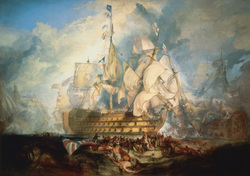
Nelson's thorough planning with his officers, known as the 'Nelson Touch', the superior seamanship and gunnery of his men and the poor state of the Franco-Spanish fleet resulted in a decisive victory for the British. It gave Britain naval supremacy for the next century and was the last battle of its kind. Nelson's death, however, caused the whole country to mourn rather than celebrate it's victory.

The basic plan was for the fleet to be split and arranged into two columns, with Nelson in the Victory leading one, and Admiral Collingwood in the Royal Sovereign leading the other. Anticipating that the Combined Fleet would attempt to escape, Collingwood's division would break through and attack the rear of the enemy line, while Nelson's would do the same near the middle of the line, reducing the chances of escape, and causing the van of the enemy line to have to turn round in order to help the rest of the fleet, which would have taken time.
Once this was done, the captains were free to use their initiative and engage with individual ships at close quarters, resulting in a "melee" battle, in which the British superiority in sailing and gunnery could do it's worst to the French and Spanish ships, which were in bad condition and were housing mainly soldiers rather than seamen.
Stuck in the port of Cadiz for most of the Trafalgar Campaign, Nelson knew that they would have been ill-practiced and would be no match for the well-trained British seamen.
However, one draw-back of the plan was, as guns were placed at the sides of a ship, the inability to fire back at the Combined Fleet as they approached. Nelson was relying on the inferior French and Spanish gunnery, hoping that they wouldn't do too much damage before the British could return fire.
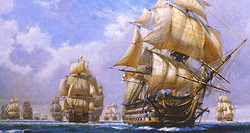
11.25 am, Nelson hoisted the signal, "England Expects Every Man Will Do His Duty", which was received with cheers all around the fleet. Villeneuve had turned his fleet round to head for Cadiz and Nelson, anxious that the enemy would escape, sent the signal, "I intend to push or go through the end of the enemy's line to prevent them from getting into Cadiz." This, however, was not done in the end, once the Buccentaure, Villeneuve's flagship had been identified, and Nelson once again aimed for the centre of the line. At midday, Villeneuve signalled to his fleet to "Engage the Enemy", and the Fougeux fired the first shots at the Royal Sovereign, which had recently had her hull re-coppered and was considerably faster than the other ships in the fleet. She was the first into action at 12.20 pm.
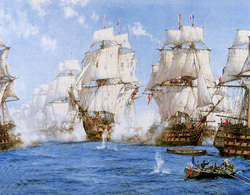
As more ships entered the battle, the middle and rear of the enemy line were completely overwhelmed, and the van sailed away when they realised they could not help their comrades.

He was taken below to the surgeon, and spent the remainder of the battle dying in agony.
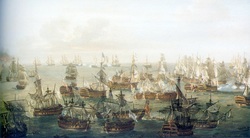
Nelson lived just long enough to hear that he had won. He asked his captain, Hardy, a close friend of his, to take care of his mistress and daughter and then to kiss him, which Hardy does twice. His lasts words are said to be, 'Thank God I have done my duty'.

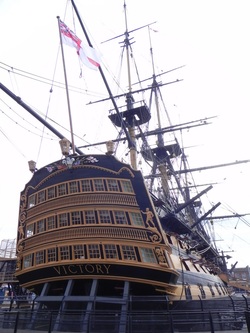
Nowadays, the Battle of Trafalgar is still celebrated in some areas of the country. In Portsmouth, the Victory flies the signal, 'England Expects That Every Man Will do His Duty', and a dinner is held in the Great Cabin, where they toast the 'Immortal Memory' of Nelson.
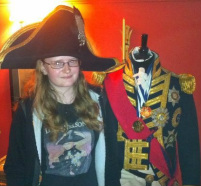
 RSS Feed
RSS Feed